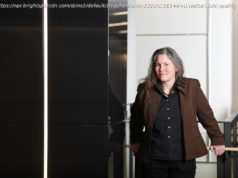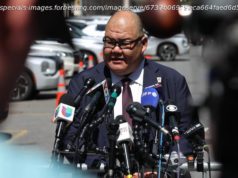A dream? Maybe. But it’s better than the climate nightmare we’re living.
It’s hard to believe, but worth recalling, that during the presidential debates in 2016, not a single question about climate change was put to Hillary Clinton or Donald Trump. That, of course, was before a plague of hurricanes, droughts and savage forest fires in California and around the world captured the public’s attention; before Mr. Trump brought renewed focus to the very issue he had dismissed as a hoax by fecklessly rolling back nearly every positive policy thing President Barack Obama had done to address it; before a series of frightening scientific reports appeared last year, warning that the window of opportunity to ward off the worst consequences of a warming globe was quickly closing.
It was also long before anyone had seen a nonbinding congressional resolution calling for something called the Green New Deal, an ambitious plan to tackle climate change (and a lot else, too) that earlier this month burst like a shooting star upon the Washington political and legislative scene. The resolution — introduced by Ed Markey, a Democratic senator from Massachusetts, and Alexandria Ocasio-Cortez, a newly elected Democratic representative whose district covers parts of the Bronx and Queens — calls for a “10-year national mobilization” through giant investments in infrastructure and carbon-free energy. It has since won the full or partial allegiance of a half-dozen Democratic presidential hopefuls who pray that town hall participants or debate moderators will ask them what they think about global warming. Which in turn means that, whatever becomes of the plan, it will have moved climate change — a serious issue that has had serious trouble gaining traction — to a commanding position in the national conversation. That alone is reason to applaud it.
In name and concept, the plan is not new. The term Green New Deal appeared in a column in The Times by Thomas Friedman in January 2007, in which he called for a vast public and private investment program that would throw everything under the sun (including, actually, the sun itself) — wind, solar, nuclear power, energy efficiency, advanced research, tax incentives and a price on carbon — into a massive effort to build a more climate-friendly energy system while also revitalizing the American economy.
This is essentially what the Mr. Markey and Ms. Ocasio-Cortez had in mind when they rolled out their resolution on Feb. 7. Unfortunately, that rollout was anything but smooth, due largely to the bungling of Ms. Ocasio-Cortez’s staff, which posted on her website a set of pugnacious and poorly written talking points (later disavowed) that scared even moderate Democrats. Apart from bold if probably unattainable objectives (a total transformation to renewable energy in 10 years), the talking points dismissed as unacceptable three strategies that many experts say are necessary to any solution: nuclear power, technology that allows fossil fuel plants to capture and store their own emissions, and market-based solutions like a carbon tax or the kind of cap and trade bill that Mr. Markey worked valiantly and unsuccessfully to get Congress to approve 10 years ago. The talking points made other dubious promises, including jobs even for Americans “unwilling” to work.






